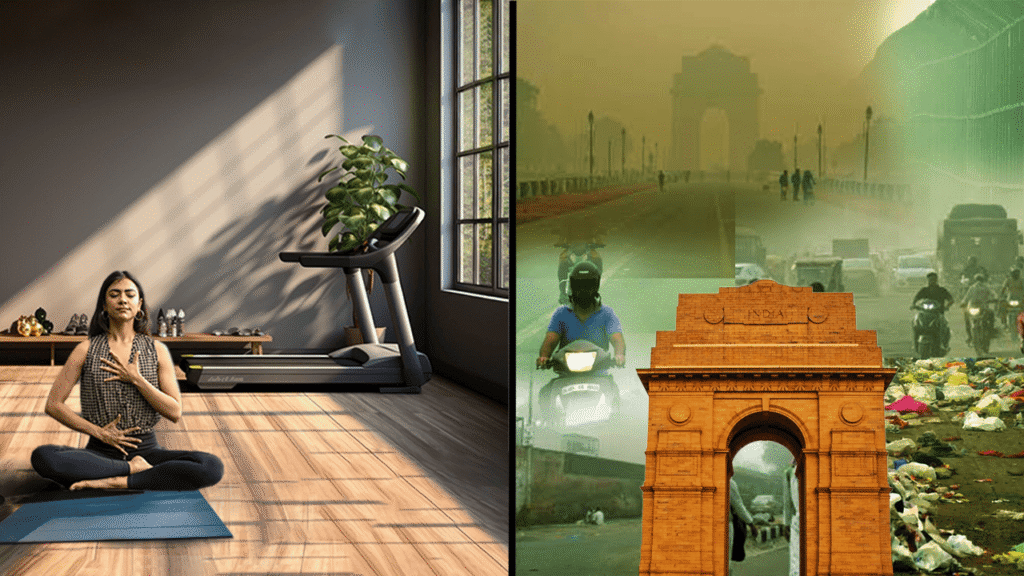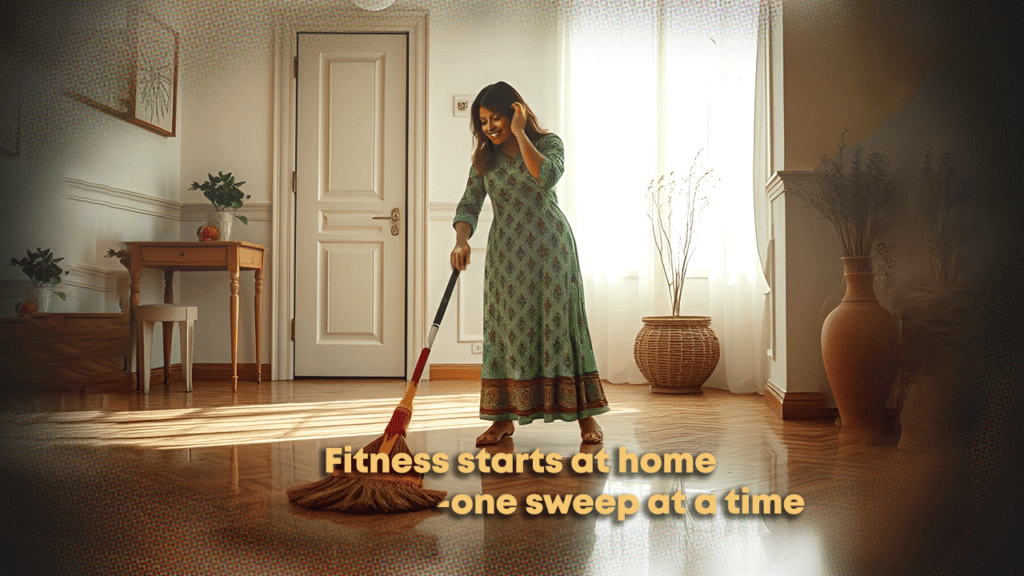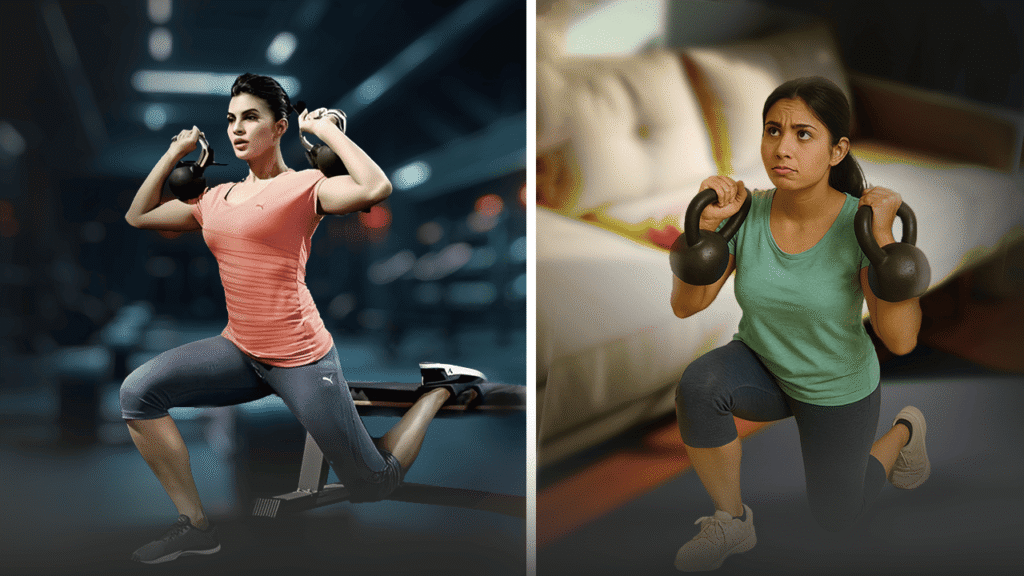How Delhi’s Deadly Air Pollution Birthed a ₹500-Crore Indoor Fitness Industry
Advertisement Home How Delhi’s Deadly Air Pollution Birthed a ₹500-Crore Indoor Fitness Industry By Sneha Arora Updated on May 14, 2025 IST 1:00 pm Imagine stepping out for your morning jog in Delhi, only to be slapped by a wall of gray haze so thick it feels like you’re inhaling a chimney. The air quality index screams “hazardous,” and suddenly, staying fit feels like a gamble with your lungs. But here’s the twist: while Delhi’s toxic air chokes its residents, a new breed of entrepreneurs is cashing in—big time. They’re selling air-purified home gym pods, pollution-proof workout gear, and VR fitness apps, transforming a health crisis into a ₹500-crore indoor fitness industry. Delhi’s air is toxic, but these innovators are getting rich helping you breathe while you burn calories. Ready to dive in? Grab your chai, and let’s explore this fitness revolution born from smog. The Air Pollution Crisis: Delhi’s Invisible Enemy Delhi’s air pollution isn’t just bad—it’s a full-blown villain in a Bollywood blockbuster, silent but deadly. In 2023, the city clinched the unenviable title of the world’s most polluted capital for the fourth year running, according to the World Air Quality Report. PM2.5 levels—those tiny particles that sneak into your lungs—regularly spike above 300 micrograms per cubic meter, when the WHO says 5 is the safe limit. That’s like trading fresh air for a cocktail of smoke, dust, and despair. I felt it firsthand last winter during a trip to Delhi. Stepping off the plane, I was hit by a heavy, acrid blanket that made my eyes water and my throat itch. Masks weren’t just for style—they were survival gear. For the 20 million people calling Delhi home, this is daily life. And for fitness buffs? It’s a nightmare. Outdoor runs or yoga in the park aren’t refreshing—they’re risky. Studies, like one from the Indian Council of Medical Research, peg air pollution as a contributor to over 1.6 million deaths annually in India. Exercising outside can clog your lungs, spike your heart rate (not in a good way), and even mess with your brain over time. So, what’s a health-conscious Delhiite to do when the air turns traitor? The answer lies indoors, where startups are rewriting the fitness rulebook. The Indoor Fitness Boom: A Breath of Fresh Air When life gives you smog, build a gym pod—or so these entrepreneurs figured. With outdoor exercise turning into a health hazard, Delhi’s residents are flocking to indoor fitness solutions. Gyms aren’t new, but this is different. We’re talking high-tech ecosystems designed to fight pollution while keeping you shredded. Enter air-purified home gym pods—compact marvels you can plop into your flat. These aren’t your average treadmills with a fan. They’re sealed units with top-tier air purifiers that zap PM2.5 particles, delivering air so clean you’d think you’re atop the Himalayas. Some even pump in extra oxygen for that post-workout glow. Startups like BreatheFit are leading the charge. I chatted with their founder, Rohan, who said, “People were desperate to stay fit without choking on smog. Our pods are like personal clean-air bunkers.” These pods don’t come cheap—prices range from ₹50,000 to ₹2 lakhs—but for many, it’s a no-brainer. Priya, a Gurgaon resident, told me, “I’d cough for hours after outdoor runs. Now, my pod’s my sanctuary. I feel alive after a workout, not half-dead.” It’s not just about fitness; it’s about lung health in a city where breathing is a battle. Innovate or Suffocate: The Tech That’s Changing the Game Delhi’s indoor fitness industry isn’t stopping at pods. Startups are rolling out gear that sounds like it’s from a sci-fi flick—pollution-proof workout clothes, smart mirrors, and VR workouts that teleport you out of the smog. Take pollution-proof workout gear. Companies like AirWear are stitching air filters into jackets and masks that don’t just block pollutants—they track your breathing and adjust on the fly. Picture this: you’re jogging indoors (or even braving a less-toxic day outside), and your mask ensures every breath is pure. It’s like having a personal air shield—superhero vibes included. Then there’s the VR fitness apps craze. Apps like FitVR let you cycle through virtual forests or sprint along digital beaches, all from your living room. I gave it a whirl—headset on, fan blasting—and for 30 minutes, I forgot Delhi’s smog existed. It’s not just fun; it tackles mental stress too. Being cooped up indoors can make you feel like a caged bird, but VR sets you free—virtually. And don’t sleep on smart mirrors. These bad boys show your workout routine, monitor indoor air quality, and tweak your session based on the vibe. “Air’s iffy today? Let’s do yoga,” it might suggest. Add portable air purifiers like AirBuddy—clip-on devices creating a clean-air bubble—and you’ve got a fitness arsenal that laughs in pollution’s face. Health and Wellness: More Than Just Muscles This isn’t just about biceps or six-packs—it’s about survival and sanity. A study from IIT Delhi found that exercising in clean indoor setups boosts lung function and slashes respiratory risks. In a city where every breath feels like a roll of the dice, that’s gold. Mentally, it’s a game-changer too. Pollution keeps you indoors, and that can brew stress, isolation, even depression. But these solutions fight back. VR workouts whisk you away, home gym pods feel like a personal retreat, and the community around these apps keeps you connected. Ankit, a Delhiite, shared, “I felt trapped until I got my VR setup. Now, I ‘travel’ while exercising—it’s my daily escape.” For the 15-25 crowd, it’s trendy tech that’s Instagram-worthy. For the 35-45 crew, it’s convenience and health rolled into one. Across the board, urban wellness is getting a makeover, and Delhi’s leading the charge—one clean breath at a time. The Business of Breathing: A ₹500-Crore Goldmine Here’s where it gets juicy: this isn’t just a health trend; it’s a money-spinner. MarketResearchIndia pegs the indoor fitness industry in Delhi at ₹500 crore in 2024, up 300% in five years. Investors are pouring cash into startups, betting on a future










